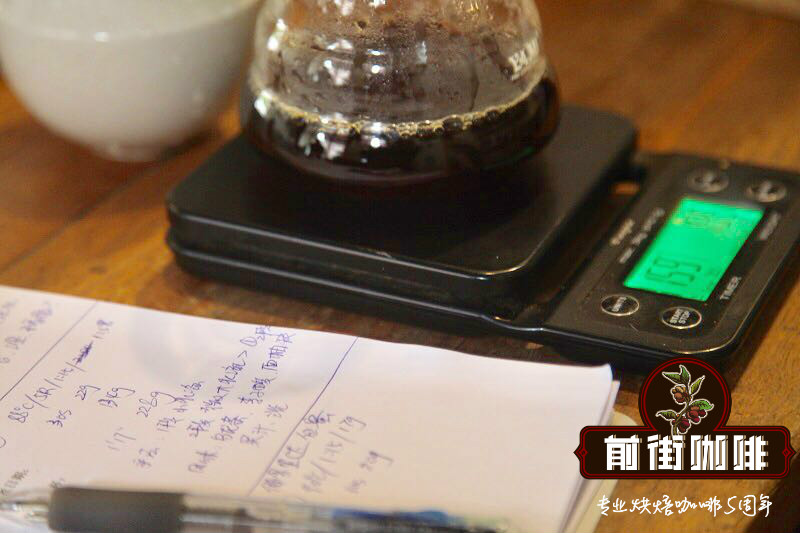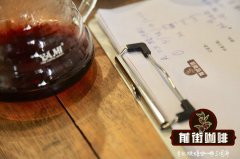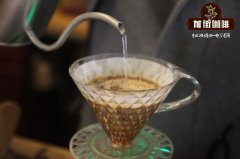Malawi Sable Farm introduces the characteristics of Malawian pea berries coffee

Professional coffee knowledge exchange more coffee bean information please follow the coffee workshop (Wechat official account cafe_style)
Coffee has been grown in Malawi, a small country in southeastern Africa, for nearly 100 years, but due to the absence of cooperatives for many years, this crude production has not yet been considered a country that produces quality coffee. Until recently.
In 2007, the Cooperative Union of Mzuzu Coffee growers was established. Through trade unions, workers are free to communicate and pool their resources to produce special coffee. The light tropical acidity and fresh sweetness of Malawi Mzuzu Union finally share the secret of premium Malawian coffee with the rest of the world.
Malawi is just beginning to gain credibility in the specialty coffee market. The quality of farms in southern Malawi has always been guaranteed. Malawi is an inland, very small country with very small coffee crops. It borders Tanzania in the north; but the north of Malawi lacks the height and infrastructure (i.e. roads) that the south of the country has. Coffee grown in Sable Farm reaches a height of 5000 to 7000 feet, then sorted and washed with clean water. These large AA beans are classified as the best beans in the crop.
Although it is washed coffee, it is less fruity, but it has a fuller body than natural Ethiopia. Make the closest comparison with coffee from Tanzania. There are plums, limes, green apples-pleasant, juicy, clean and sweet.
The beans here are mainly pea berries, which are harder to bake than most coffees. They are very dense, so they require a lot of calories, and without high air circulation, you may burn the outside before baking the inside of the beans, resulting in uneven baking. Pea berries does very well in air ovens. If you bake beans in a frying pan or anywhere, you have to stir the beans manually because they are not flat, but flat. If you have a drum roaster, if you can increase the speed of the drum or increase the exhaust fan during the baking process, they will be fine.
Except for the density of beans, they are easy to bake! There is a similar smell everywhere from the first explosion to the second explosion, and all the smells are great. The lighter side of the spectrum allows you to get more brightness, the taste of plum blossom, medium baking is our favorite, while Erbao-some green apples, juicy lime, smoother and sweeter. At the time of the second explosion, it was not so sweet and complex, but it was still fruity and still citrus. I would compare it to a very good Tanzania with a tolerant baking curve.
Qianjie coffee is recommended to be brewed in three stages with 89-90 degrees water, with the taste of plums, limes and green apples at the entrance.
Important Notice :
前街咖啡 FrontStreet Coffee has moved to new addredd:
FrontStreet Coffee Address: 315,Donghua East Road,GuangZhou
Tel:020 38364473
- Prev

Where is Malawian coffee grown? Malawi Rosa Coffee Variety
For more information on coffee beans, please follow the coffee workshop (Wechat official account cafe_style) Africa is known as the birthplace of coffee; for example, Ethiopia is famous for coffee and Tanzania is famous for Kilimanjaro. But did you know that Malawi in East Africa is also famous for producing coffee? There are many attractive places in Malawi, including
- Next

Steps of washing beans and making coffee at Angina Manor in Colombia _ how to make coffee powder by hand
For more information on coffee beans, please follow the Coffee Workshop (Wechat official account cafe_style) Colombian Coffee Angina Manor washing Colombia Colombian Coffee has clearly defined growing areas and the impressive variety of coffee they produce. Whether you want round, heavy coffee, or refreshing
Related
- Detailed explanation of Jadeite planting Land in Panamanian Jadeite Manor introduction to the grading system of Jadeite competitive bidding, Red bid, Green bid and Rose Summer
- Story of Coffee planting in Brenka region of Costa Rica Stonehenge Manor anaerobic heavy honey treatment of flavor mouth
- What's on the barrel of Blue Mountain Coffee beans?
- Can American coffee also pull flowers? How to use hot American style to pull out a good-looking pattern?
- Can you make a cold extract with coffee beans? What is the right proportion for cold-extracted coffee formula?
- Indonesian PWN Gold Mandrine Coffee Origin Features Flavor How to Chong? Mandolin coffee is American.
- A brief introduction to the flavor characteristics of Brazilian yellow bourbon coffee beans
- What is the effect of different water quality on the flavor of cold-extracted coffee? What kind of water is best for brewing coffee?
- Why do you think of Rose Summer whenever you mention Panamanian coffee?
- Introduction to the characteristics of authentic blue mountain coffee bean producing areas? What is the CIB Coffee Authority in Jamaica?

